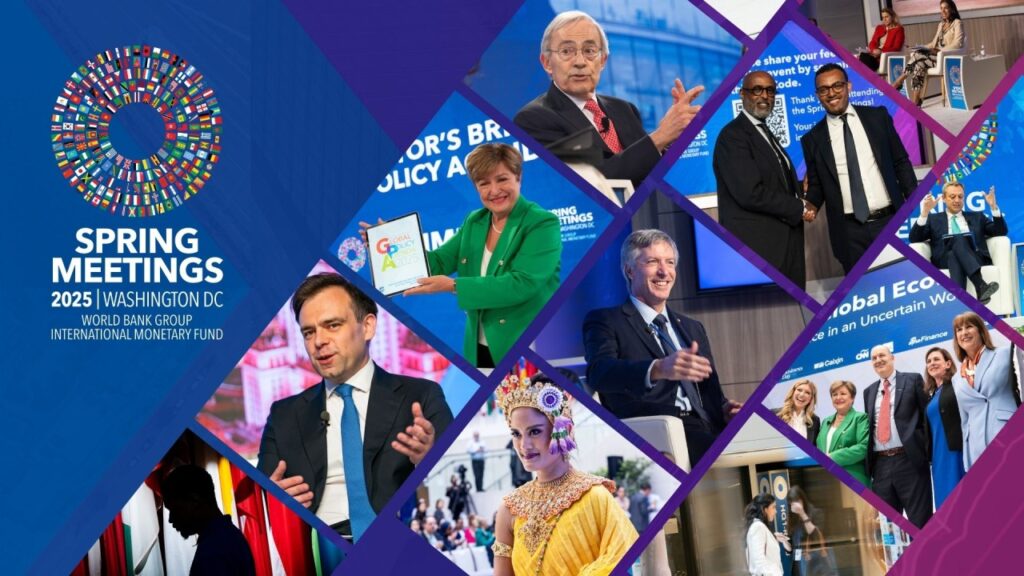Restoring Stability, Growth and Jobs: Insights from the IMF's and World Bank's Spring Meetings 2025
- Global Economic Landscape: Evolving Challenges
The global economy is entering a period marked by increased uncertainty, influenced by the combination of rising trade tensions, financial vulnerabilities, and fiscal pressures.
According to the IMF’s World Economic Outlook (WEO), global growth is forecast to moderate to 2.8% in 2025 and 3.0% in 2026, remaining below the historical pre-pandemic average.
The recent increase in global trade barriers, particularly the introduction of new tariffs by the United States and corresponding countermeasures, has contributed to heightened uncertainty in global supply chains.
Inflationary pressures are gradually easing but at a slower pace than previously anticipated, while uncertainty around policy directions continues to weigh on investment and labor market dynamics across both advanced and emerging economies.
- Financial Stability: Emerging Risks
The Global Financial Stability Report (GFSR) highlights increasing pressures within the global financial system:
- Asset valuations remain elevated and are vulnerable to corrections.
- Emerging markets are experiencing capital outflows, currency pressures, and increased debt refinancing challenges.
- Nonbank financial institutions, such as hedge funds, are characterized by higher leverage and closer linkages to banks, increasing potential systemic risks.
- Sovereign bond markets are facing rising yields and liquidity concerns.
Further geopolitical tensions could contribute to heightened market volatility. The IMF emphasizes the importance of maintaining robust liquidity frameworks, strengthening supervision across both banks and nonbanks, and enhancing cross-border financial cooperation.
- Fiscal Outlook: Rising Pressures
The Fiscal Monitor indicates that public finances are facing increasing strains.
Global public debt is projected to increase by 2.8 percentage points of GDP by 2025, reaching levels near 100% of global GDP by the end of the decade.
Key points include:
- Fiscal risks are becoming more pronounced, particularly among major economies such as the United States, China, and Germany.
- Increases in defense spending, particularly in Europe, are contributing to fiscal pressures.
- Emerging and low-income economies are encountering higher borrowing costs, declining revenues, and a reduction in external financing.
The IMF recommends gradual and credible fiscal consolidation strategies, tailored to national contexts, while ensuring continued investment in human capital, infrastructure, and essential social programs.
- Labor Markets and Youth Employment: Key Priorities
At the World Bank Group’s and IMF Development Committee Report Jobs: The Path to Prosperity long-term challenges related to labor markets and employment were emphasized: “Over the next decade, approximately 1.2 billion young people in emerging economies are expected to reach working age, yet current projections suggest the creation of only around 420 million new jobs.”
The event highlighted several focus areas:
- Investing in human capital and infrastructure to enhance workforce readiness and productivity.
- Creating stable and predictable regulatory environments to foster entrepreneurship and private sector growth.
- Mobilizing private capital to support scalable and inclusive job creation initiatives.
Entrepreneurs, youth advocates, and policymakers underscored the importance of designing job creation strategies that are sustainable and inclusive, supporting both economic development and social cohesion.
This focus complements broader economic concerns outlined by the IMF, particularly regarding the risks of low growth and rising inequality without targeted investments in opportunity and inclusion.
- Policy Priorities: Coordinated Approaches
Several key policy areas were identified across the IMF and World Bank reports:
- Trade and Investment: Reducing trade barriers, restoring policy predictability, and encouraging international cooperation.
- Financial Sector Resilience: Strengthening macroprudential oversight, reinforcing crisis management frameworks, and monitoring nonbank financial sectors.
- Fiscal Policy: Implementing gradual and credible fiscal adjustments while maintaining support for productive and social investments.
- Youth Employment Strategy:
- Expanding education, skills development, and infrastructure investments.
- Supporting entrepreneurship and small- and medium-sized enterprise (SME) development.
- Mobilizing private sector engagement in job creation efforts.
- Structural Reforms: Enhancing labor market flexibility, improving public sector efficiency, and addressing inequality.
The reports emphasize that international coordination and collaboration remain critical, as global interconnections mean that localized shocks can have broader impacts on growth, financial stability, and labor markets.
- Outlook and Risks
The global outlook remains subject to several downside risks:
- Continued trade tensions could weigh further on investment and growth prospects.
- Financial markets remain vulnerable to sharp corrections.
- Fiscal challenges, if left unaddressed, could affect market confidence, especially in highly indebted economies.
- Labor market pressures, particularly among youth populations, could pose socio-economic risks in emerging and developing economies.
Nevertheless, the reports highlight that opportunities remain: successful resolution of trade disputes, stabilization of financial conditions, effective fiscal management, and investments in human capital and infrastructure could support stronger and more inclusive growth over the medium term.

Fatmir Besimi
Professor of Economics and Finance, Founder and CEO of Strategers.

